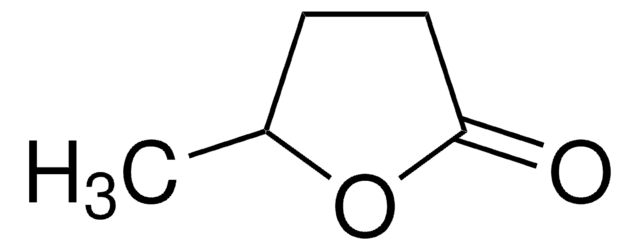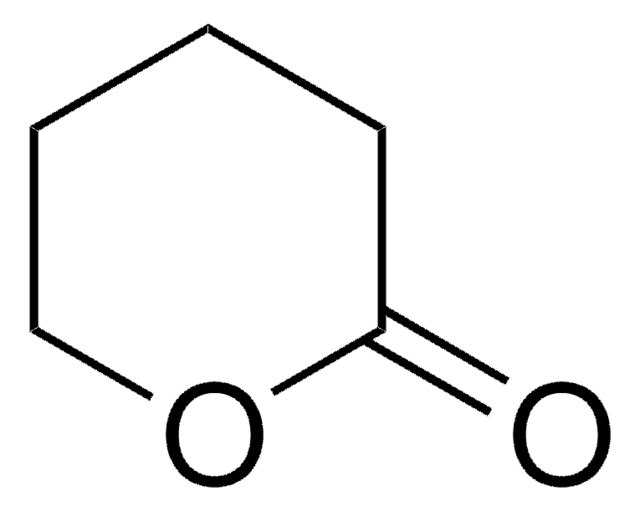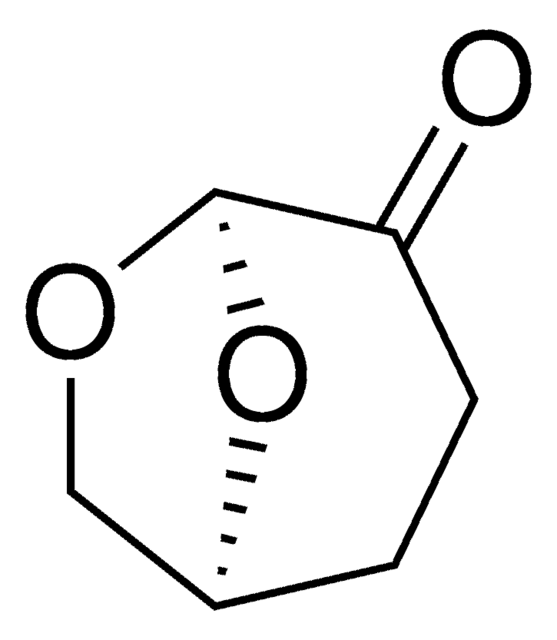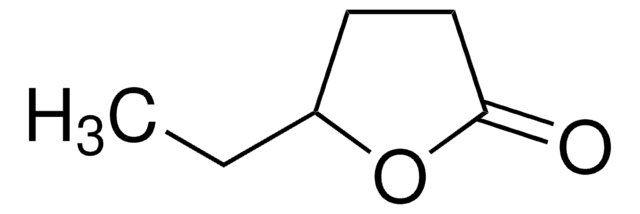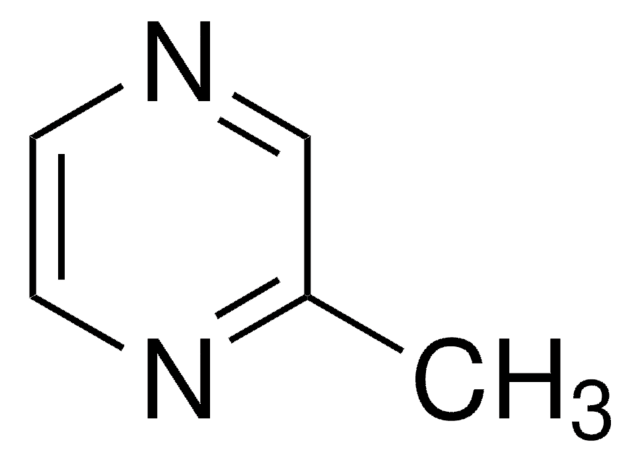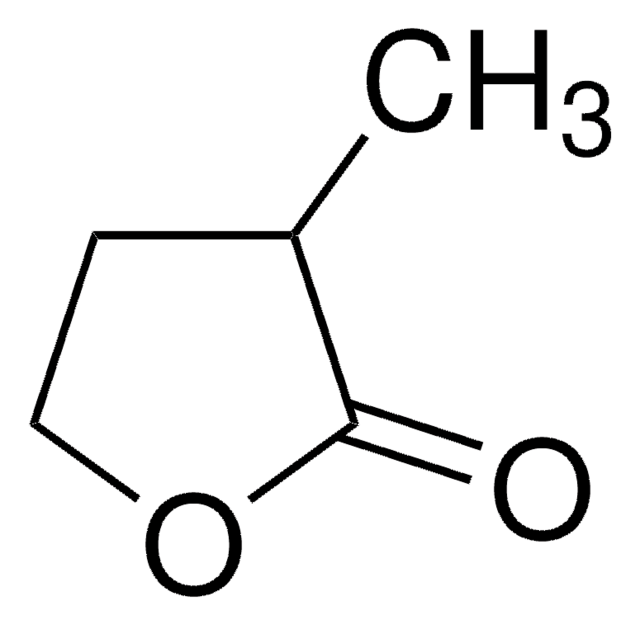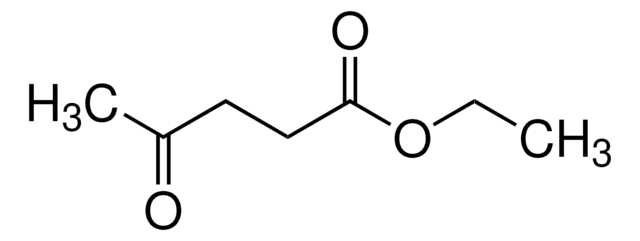W310311
γ-Valerolactone
natural, ≥95%, FG
Synonyme(s) :
γ-Methyl-γ-butyrolactone, 4,5-Dihydro-5-methyl-2(3H)-furanone, 4-Hydroxypentanoic acid lactone
About This Item
Produits recommandés
Qualité
FG
Kosher
natural
Niveau de qualité
Conformité réglementaire
EU Regulation 1334/2008 & 178/2002
Densité de vapeur
3.45 (vs air)
Essai
≥95%
Indice de réfraction
n20/D 1.432 (lit.)
pb
207-208 °C (lit.)
82-85 °C/10 mmHg (lit.)
Pf
−31 °C (lit.)
Densité
1.05 g/mL at 25 °C (lit.)
Application(s)
flavors and fragrances
Documentation
see Safety & Documentation for available documents
Allergène alimentaire
no known allergens
Propriétés organoleptiques
cocoa; herbaceous; woody; sweet; warm
Chaîne SMILES
CC1CCC(=O)O1
InChI
1S/C5H8O2/c1-4-2-3-5(6)7-4/h4H,2-3H2,1H3
Clé InChI
GAEKPEKOJKCEMS-UHFFFAOYSA-N
Vous recherchez des produits similaires ? Visite Guide de comparaison des produits
Catégories apparentées
Description générale
Application
Actions biochimiques/physiologiques
Mention d'avertissement
Warning
Mentions de danger
Conseils de prudence
Classification des risques
Eye Irrit. 2 - Skin Irrit. 2
Code de la classe de stockage
10 - Combustible liquids
Classe de danger pour l'eau (WGK)
WGK 1
Point d'éclair (°F)
204.8 °F - closed cup
Point d'éclair (°C)
96 °C - closed cup
Listes réglementaires
Les listes réglementaires sont principalement fournies pour les produits chimiques. Seules des informations limitées peuvent être fournies ici pour les produits non chimiques. L'absence d'indication signifie qu'aucun des composants n'est répertorié. Il incombe à l'utilisateur de s'assurer de l'utilisation sûre et légale du produit.
EU REACH Annex XVII (Restriction List)
Faites votre choix parmi les versions les plus récentes :
Déjà en possession de ce produit ?
Retrouvez la documentation relative aux produits que vous avez récemment achetés dans la Bibliothèque de documents.
Les clients ont également consulté
Global Trade Item Number
| Référence | GTIN |
|---|---|
| W310311-100G-K | 4061834397229 |
| W310311-500G-K | 4061833905555 |
| W310311-1KG-K | 4061833905548 |
| W310311-SAMPLE-K | 4061834355991 |
Notre équipe de scientifiques dispose d'une expérience dans tous les secteurs de la recherche, notamment en sciences de la vie, science des matériaux, synthèse chimique, chromatographie, analyse et dans de nombreux autres domaines..
Contacter notre Service technique